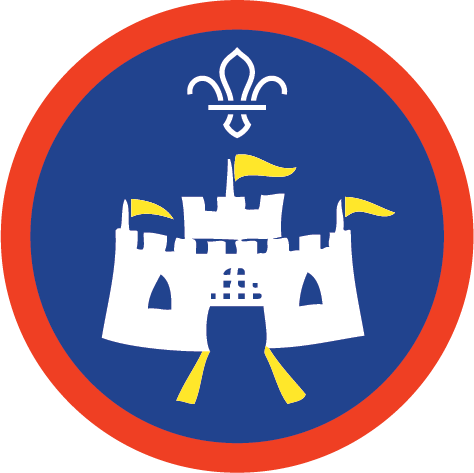
Local knowledge tour
You’ll need
- Device with access to the internet
- Pens or pencils
- Scrap paper
- Map of your local area
Before you begin
- Use the safety checklist to help you plan and risk assess your activity. Take a look at our guidance to help you carry out your risk assessment, including examples.
- Make sure all young people and adults involved in the activity know how to take part safely.
- This is a great activity to run during an online session. Check out the advice on using Zoom and other popular digital platforms and the guidance on being safe online.
- Depending on how much time and resources you have available, you may want to run this activity across two sessions.
- If you’re not meeting in person, we’ve added some ideas below to run your relay virtually.
Time to get local
- The person leading the activity should explain that everyone will be participating in and running a tour of their local area. Consider the places in your local community that have significance and bring people together.
- Everyone should split into small groups.
- Everyone should spend some time researching their local area. Groups should think of as many local landmarks, places of interest, historical buildings or landscape features as they can. They should make a note of the location and other important information for each place. We’ve included some example things to look out for below.
- Everyone should come back together as a group to share their ideas. The person leading the activity should mark all the different places as points on a map.
- Everyone should plot a route around the area to cover as many different places as you can.
- Everyone should choose one of the points of local interest on the route.
- Everyone should do some research about the place they have chosen, which they will share with the group when they walk the route. Find out more about the place and why it’s important to local history or culture.
Complete the tour
- If you’re meeting face-to-face, walk your route as a group. When you reach each person’s checkpoint, give them a chance to share the information they found out.
- Set everyone the challenge of talking for 60 seconds about their checkpoint without stopping.
- Challenge everyone to visit the place they chose. Ask them to take some photos and use them to make a quiz to put the group’s local knowledge to the test.
- Doctor’s surgery, veterinary surgery, dentist, hospital, ambulance station.
- Fire station, police station, car repair garage, shopping centre, retail park, convenience stores.
- Bus station, railway station, local routes of buses and trains.
- Scout meeting places or Headquarters, public parks, theatre, sports and leisure complex, cinema.
- Places of worship, museum, schools, colleges, local government buildings.
- Motorways and national road routes.
- Viewpoints, places of natural beauty and cultural or historical significance.
Be sensitive – leaders should check identified locations as some places may not want a crowd of Scouts turning up and taking photos.
Reflection
This activity was all about being an active citizen and learning to be a team player. This activity helped you learn more about your local community. Did you find out anything that you didn’t already know about the area you live in? What was the most interesting or surprising that you found out? Did you find it easy or difficult to find the information? This was also working together as a team and teaching each other new information. Everybody researched one place along the route. Could you have researched all the places you visited or would it have taken too long? What was the most interesting place on the route that someone else had researched?
Safety
All activities must be safely managed. You must complete a thorough risk assessment and take appropriate steps to reduce risk. Use the safety checklist to help you plan and risk assess your activity. Always get approval for the activity, and have suitable supervision and an InTouch process.
- Online safety
Supervise young people when they’re online and give them advice about staying safe. Take a look at our online safety or bullying guidance. The NSPCC offers more advice and guidance, too. If you want to know more about specific social networks and games, Childnet has information and safety tips for apps. You can also report anything that’s worried you online to the Child Exploitation and Online Protection Command. As always, if you’ve got concerns about a young person’s welfare, including their online experiences, follow the Yellow Card to make a report.
- Visits away from your meeting place
Complete a thorough risk assessment and include hazards, such as roads, woodland, plants, animals, and bodies of water (for example, rivers, ponds, lakes, and seas). You’ll probably need more adult helpers than usual. Your risk assessment should include how many adults you need. The young people to adult ratios are a minimum requirement. When you do your risk assessment, you might decide that you need more adults than the ratio specifies. Think about extra equipment that you may need to take with you, such as high visibility clothing, a first aid kit, water, and waterproofs. Throughout the activity, watch out for changes in the weather and do regular headcounts.
You could change the length of the walk or the number of checkpoints to make your relay more or less difficult.
If you’re meeting in person to complete your walk, make sure everyone can access the route you’ve planned. Think about whether there are steps and places to rest and take breaks.
All Scout activities should be inclusive and accessible.
Once you’ve planned your route you could write route cards and include things like compass bearings and pacing to meet some of the requirements of the Navigator Staged Activity Badge.
